WHO NEEDS CONICALS?
Ever since I started hunting with a muzzle-loader about 15 years ago, I’ve been using patched round balls. This habit has been cause for derision from some of my hunting companions, who believe that round balls are “marginal” and/or “obsolete,” and that I must therefore be daft to use them. I really can’t blame 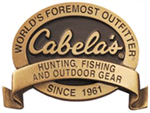 them for thinking this way, because if you read the ad copy in the gear catalogs, you’ll definitely get the impression that “experts” consider round balls as barely suitable for squirrels. The ads clearly imply that a round ball will bounce off a deer—or at the very least leave you with a long and arduous tracking job. However, after a decade and a half I can claim some expertise myself, and I say unequivocally that this attitude is patent nonsense. Anyone who stops to think should realize that the Appalachian Mountains were originally settled by people armed with rifles shooting round balls. For that matter, so was most of the rest of North America until the introduction of fixed ammunition and repeating rifles in the mid-1860’s.
them for thinking this way, because if you read the ad copy in the gear catalogs, you’ll definitely get the impression that “experts” consider round balls as barely suitable for squirrels. The ads clearly imply that a round ball will bounce off a deer—or at the very least leave you with a long and arduous tracking job. However, after a decade and a half I can claim some expertise myself, and I say unequivocally that this attitude is patent nonsense. Anyone who stops to think should realize that the Appalachian Mountains were originally settled by people armed with rifles shooting round balls. For that matter, so was most of the rest of North America until the introduction of fixed ammunition and repeating rifles in the mid-1860’s.
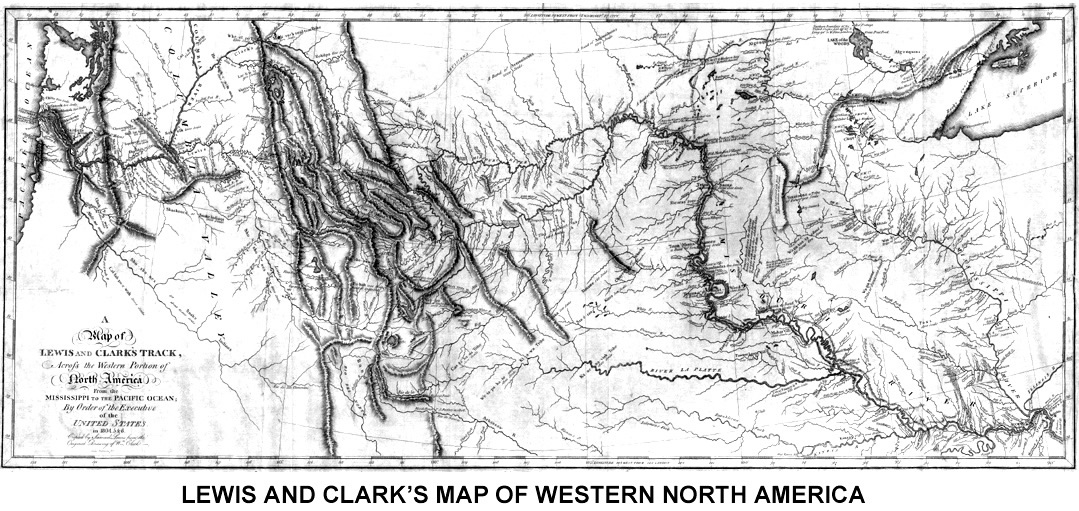
Lewis and Clark went to the Pacific and back using them. The “Mountain Men” such as Jim Bridger (below left) who roamed the untamed West in the early 19th Century used them to hunt and keep their hair in place when the Indians took offense at having their beaver pelts hijacked by white interlopers. All these people thoroughly understood the limitations and advantages of their weapons, and used them to good effect on everything from rodents to grizzly bears.
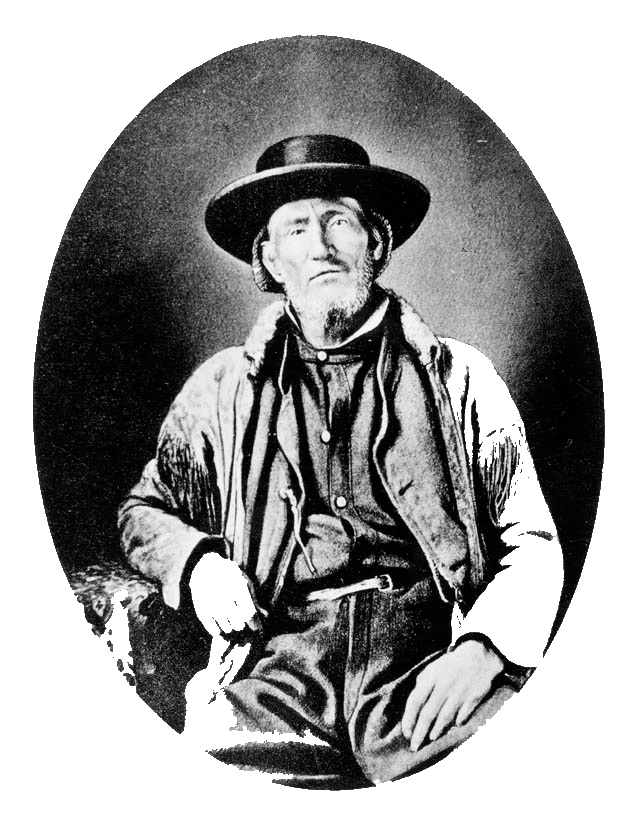 No new native species have been added to the roster of game animals in North America in the past couple of hundred years. Rather the reverse: Virginia used to have moose and elk—and even bison!—but all these are pretty thin on the ground these days. “Big game” in this state, as in most states, means whitetail deer and black bear. If a frontiersman in Colonial times could survive using round balls in a “Kentucky” rifle, then it ought to be obvious that properly understood and properly used, they will do what is needed just as well in the 21st Century as in the 18th and 19th. Deer and bear haven’t changed all that much in 250 years.
No new native species have been added to the roster of game animals in North America in the past couple of hundred years. Rather the reverse: Virginia used to have moose and elk—and even bison!—but all these are pretty thin on the ground these days. “Big game” in this state, as in most states, means whitetail deer and black bear. If a frontiersman in Colonial times could survive using round balls in a “Kentucky” rifle, then it ought to be obvious that properly understood and properly used, they will do what is needed just as well in the 21st Century as in the 18th and 19th. Deer and bear haven’t changed all that much in 250 years.
I don’t dispute that conical bullets are ballistically superior in some ways to round balls. They do retain velocity better, thanks to greater sectional density and better aerodynamics. Obviously these are significant considerations…but they’re irrelevant in the context of hunting in this part of the country. The whitetails I and my partner Rick have taken over the years are proof that in southwestern Virginia, patched round balls work well. And they have some advantages over conicals that outweigh their theoretical deficiencies. Some of these advantages are the same ones that led our ancestors to use them. This essay will relate some of the reasons why I see no reason to switch, and I hope convince some of the scoffers that I do know what I’m talking about.
They’re Economical
The first reason to use round balls—one that was vitally important to our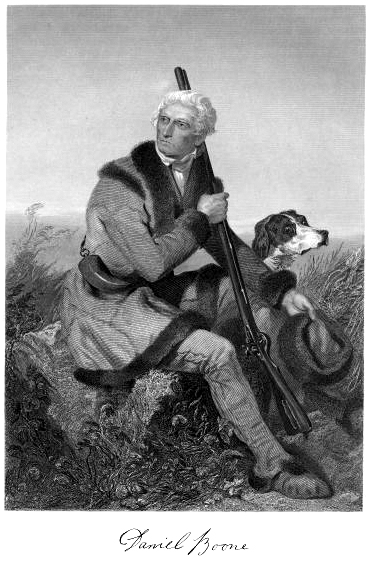 forebears—is economy. In the mid-18th Century, this part of the world was a howling wilderness with no roads, just some rough trails. Wheeled vehicles couldn’t be used because the trails weren’t wide or level enough except in a few well-trodden places. In most of the mountainous East wagons were useless, the only means of travel being foot or on horseback. When Daniel Boone (right) led settlers down the Wilderness Road to "Kentucky," when they reached the narrow Cumberland Gap, wagons were dismantled on the eastern side so that they and everything in them could be carried through. Weight was therefore an important matter to pioneers, even more so than it is to today’s through-hikers on the Appalachian Trail. They didn’t bring along anything that wasn’t essential because sooner or later they were going to have to carry it on their backs.
forebears—is economy. In the mid-18th Century, this part of the world was a howling wilderness with no roads, just some rough trails. Wheeled vehicles couldn’t be used because the trails weren’t wide or level enough except in a few well-trodden places. In most of the mountainous East wagons were useless, the only means of travel being foot or on horseback. When Daniel Boone (right) led settlers down the Wilderness Road to "Kentucky," when they reached the narrow Cumberland Gap, wagons were dismantled on the eastern side so that they and everything in them could be carried through. Weight was therefore an important matter to pioneers, even more so than it is to today’s through-hikers on the Appalachian Trail. They didn’t bring along anything that wasn’t essential because sooner or later they were going to have to carry it on their backs.
Lead was valuable stuff on the frontier. Every ounce had to be imported from more settled areas. Since a round ball is the lightest projectile that can be cast, the number of bullets per pound was maximized, and weight saved for even more precious and hard-to-get items such as gunpowder, which couldn’t be recycled or easily made.
Modern BP hunters, especially those shooting in-line muzzle-loaders, think of a .50 caliber rifle as about as small as muzzle-loaders should be: but a .50 was the exception, not the rule, on the eastern frontier. A .50 is really bigger than necessary for most eastern woodlands animals. Light weight, medium bore size, and accuracy characterized the rifles of 18th Century Appalachian settlers. A typical “Kentucky” rifle was far more likely to be a .45 or even a .40 than anything larger, thus maximizing its utility and economy in the consumption of lead and powder.
The Virginia DGIF mandates a minimum of .45 caliber for deer today, but the fact is that even a .40 is adequate at close range when used by a careful and competent hunter: many other states do allow .40’s. Smaller bullets could be used on smaller game, with smaller charges of precious gunpowder, but were still adequate for deer or Indians. In the West, where elk and grizzlies replaced whitetails and black bears, .50 through .58 caliber rifles were necessary. In contrast to the “Kentucky” rifle, the Hawken of the West typically was .50 caliber or larger. Nevertheless the same argument of economy applied. Lewis & Clark used .54’s.
The economy principle applies to muzzle-loading hunters today, though surely less forcefully now that we have UPS trucks and Interstate 81 instead of ox-drawn wagons and the Wilderness Trail to bring us goods. Whether you buy lead at a scrap dealer or dig it out of your club’s backstop you get “more bang for the buck” (ha, ha) by using round balls instead of conicals.
A .50 round ball (0.490” diameter) weighs close to 185 grains so you get about 38 bullets from a pound of lead. The typical .50 conical bullet weighs much more: the T/C “Maxi-Ball,” a popular projectile for in-lines with fast rifling twists, is 340 grains and up. There are only 20 of those big bullets in a pound. Most people don’t cast their own bullets because they don’t do much BP shooting outside of the hunting season. Buying “tailor-made” bullets is a viable option, but recent drastic increases in the cost of scrap metal have affected the cost of finished products like bullets. Manufacturers such as Hornady or Speer have been jacking up the cost of their products to keep pace.
For the hunter who buys his bullets, round balls are far more cost effective than conicals. Today I checked the prices at the local Feed & Seed: even in big calibers, the round ball is much cheaper than conicals. Fifty .58-caliber balls are going for $9.00 plus tax: $13 buys 100 .50 round balls, but only 20 conicals!
They’re Accurate
Round balls are accurate. In a good rifle with the proper twist rate (classically 1 turn in 66” and somewhat slower in bores larger than .50), a proper powder charge, and a patch of the right thickness, they will give clover-leaf groups at typical muzzle-loading hunting ranges. Sure, so will conical bullets if things are right; but again, there’s no need to spend the extra money.
One factor in accuracy is the shooter’s tolerance of recoil. All other things being equal, a conical bullet is going to produce more recoil than a round ball. A recoil sensitive shooter needs to think about this. Especially with the big calibers, say .54 and up, recoil becomes a consideration to be dealt with.
Any discussion of relative accuracy has to take into account the matter of rifling twist rates. Round balls need a slow twist. This is typically 1 turn in 66" and a bit slower in really large calibers. The typical in-line rifle is rifled 1:28" or 1:32" both of which are too fast for round balls and will give poor accuracy. Such guns usually do better with the conicals for which they're intended. Thompson-Center's sidelock rifles have a "compromise" twist rate of 1:48" that serves adequately for both balls and conical bullets, but many traditional styled sidelocks still use the slower 1:66" rate.
They Do No Significant Meat Damage
Big bullets at moderate velocity don’t mess the meat up. The typical “bloodshot” meat found with high-powered centerfires, or with high-velocity saboted projectiles from muzzle-loaders, is a non-event. The saying is that you “…can eat right up to the hole…” which is invariably true.
They Work Just Fine, Thank You Very Much
OK, that’s cost effectiveness, but how about hunting effectiveness in the field, on real game? Here again, I can state with confidence that there’s nothing in Virginia that can be legally taken with a muzzle-loading rifle for which round balls are “marginal,” let alone “inadequate.”
American hunters are obsessed with velocity above all things. Dr Martin Fackler has use the phrase “..the idolatry of velocity…” to describe this mindset, and he’s got a point. There’s almost a religious quality in the way Americans view velocity as the defining virtue of firearms, even when that flies in the face of their own experience. But velocity is not the only component of what makes a bullet an effective killer. Nominal muzzle energy is nearly as unimportant. What matters most and what really makes a bullet effective is penetration.
The bullet has to go deep enough to reach important structures such as the heart, lungs, and spine. Bullets kill the same way a knife or an arrow kills: by causing massive blood loss and/or nervous system damage. 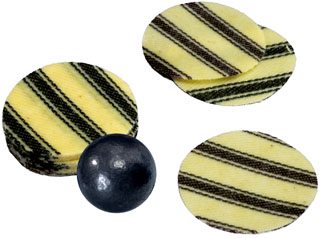 These are not functions of velocity nor even energy, but penetration. And even though they’re light for their diameter, round balls at moderate velocities have amazing penetration.
These are not functions of velocity nor even energy, but penetration. And even though they’re light for their diameter, round balls at moderate velocities have amazing penetration.
In most cases a round ball has more than adequate penetration to go all the way through a deer (see below) and exit. This (despite what the believers in the fallacy of “energy transfer” would have you believe) is exactly what you want to happen. As Elmer Keith said, “One hole lets the air in; the other lets the blood out.” 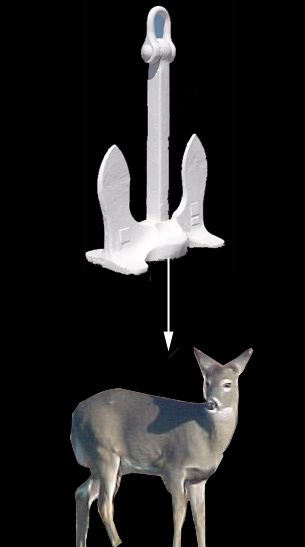 A deer with a hole through it from one side to the other isn’t going anywhere far away. Lead bullets are “cohesive” and don’t break up easily. With a modest amount of hardening alloy in the mix (pretty typical of range scrap used in home casting) they’ll penetrate far better than paper energy figures might imply. Consider a .50 round ball at 1700 FPS. It has a muzzle energy figure of 1193 foot-pounds. Now imagine that a half-inch rod bearing a half ton weight—a medium sized ship's anchor, for example—dropped onto a deer from a height of one foot: is there any doubt the rod will go all the way through?
A deer with a hole through it from one side to the other isn’t going anywhere far away. Lead bullets are “cohesive” and don’t break up easily. With a modest amount of hardening alloy in the mix (pretty typical of range scrap used in home casting) they’ll penetrate far better than paper energy figures might imply. Consider a .50 round ball at 1700 FPS. It has a muzzle energy figure of 1193 foot-pounds. Now imagine that a half-inch rod bearing a half ton weight—a medium sized ship's anchor, for example—dropped onto a deer from a height of one foot: is there any doubt the rod will go all the way through?
Expansion seems to make no difference in killing effectiveness of muzzle-loader projectiles since their cross sectional diameter is quite large to start with. Pure lead balls at modest velocities often do flatten and expand somewhat, but equally often they don’t. It depends on what they hit. Whitetail rib bones aren’t massive and don't provide enough resistance to flatten them much if at all. A chest hit will go through from side to side every time if only rib bones are in the way. More often than not a ball will exit, especially the larger calibers from .50 and up, regardless of what it hits.
Home-cast balls are usually comparatively hard since they typically contain antimony or tin if they’re cast from lead scrap. Hardened lead bullets penetrate even better than the pure lead balls that commercial companies produce. So long as a ball is cohesive enough not to break up on impact it will punch through just about anything in its way, including bones.
The pioneers understood that penetration was by far the most important factor in effectiveness, but they had a somewhat different take on it. One reason they liked lighter calibers was that the bullet often didn’t exit: that meant it could be recovered, melted down, and reused. (Whether they dug the bullets out of the bodies of dead Indians I don't know...) But they also knew that "dead is dead," so that using anything more than was needed to make a reliable kill was pointless and wasteful. Present day hunters don’t depend on their rifles for subsistence so we don’t have to recover bullets. We can afford to lose a bullet to a pass-through, as a means of ensuring a swift and humane kill.
Lighter balls (such as the .45) may be stopped by bones, but a .50, let alone a .54, will almost always exit a deer on the off side regardless of what it hits. Even a .45 ball will go all the way through if it doesn’t hit something robust. I have killed three deer using .50's, with complete pass-through in two and astonishing penetration in one even though the bullet broke into two pieces on a bone (see below). I have killed 16-17 deer with a .54 and on all of them except one had complete pass-through. I have only once recovered a .54 ball, and that one was just under the skin on the opposite side on a shot through both shoulder blades.
In other words, big round bullets kill very well. Of the deer I’ve personally taken with round balls only two went as much as 50 feet from the point where they were shot. “Letting the blood out and the air in” gave me an excellent trail to follow for the only one that went out of sight behind a ridge before it died. I’ve yet to shoot a deer with my .72 but I haven’t any doubt that a ball in caliber would penetrate a deer lengthwise every single time.
They’re Perfectly Suited to Local Hunting Conditions
Most of southwestern Virginia is hilly and heavily forested. The ranges are short in most places. Round balls are suitable for ranges up to 100 yards (they’ll kill much farther away, of course) and in 90% of the situations where muzzle-loaders are used, the odds of getting a shot that far away are small. In 20 years of hunting deer in this state, only twice have I even been “offered” a shot at as much as one hundred yards, with any type of firearm. In most cases the range is well under 40 yards, in many cases it’s well under 40 feet thanks to underbrush. On average, probably 30-50 yards will account for almost all the opportunities anyone’s going to have. While longer and heavier conical bullets do have an edge at very long ranges, for the typical woodlands deer hunter, or the man who hunts a small farm, they confer no advantage.
Meet Some of The Victims
The conviction that round balls are no handicap isn’t just based on my own experience. In addition to my own kills, Rick has taken at least a dozen deer with his .50, most of them one-shot kills, and in almost every case getting complete pass-through.
Here are some specific examples that testify to the penetration and killing power of these projectiles. There have been others, these are just a few:
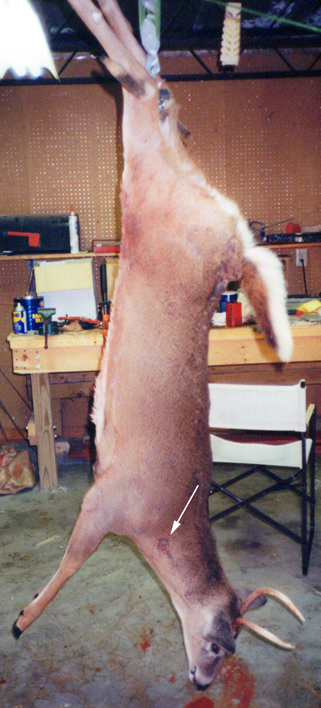
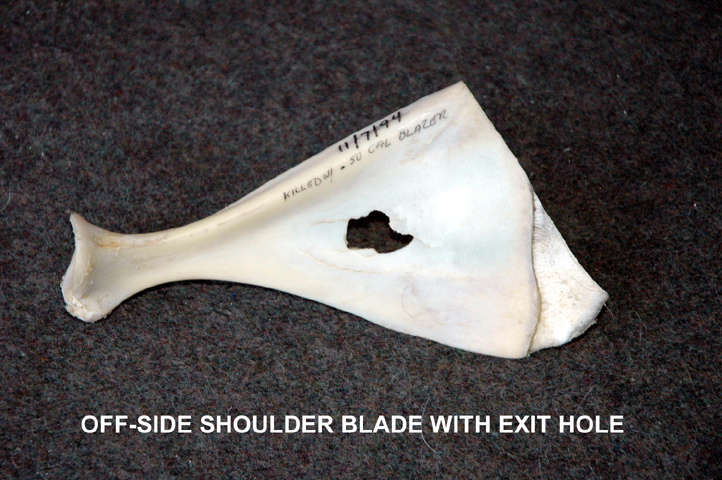 Deer #1:
Deer #1:
A spike buck shot at about 50 yards distance using a .50 and a home-cast (rather hard) ball. He was hit in the neck, just forward of the point where it joins the body. The ball traveled through the muscles of the chest, never entered the thoracic cavity, and exited on the opposite side, after having passed through a measured 24” of meat and the off-side shoulder blade.
Deer #2:
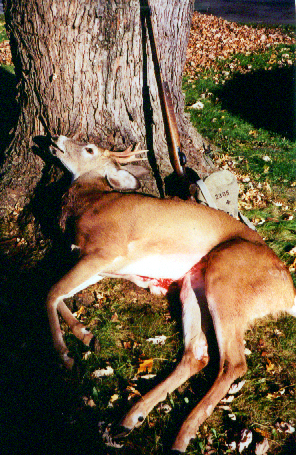 This 4-pointer met his end 25 yards from the wrong end of my .50 caliber CVA Blazer. The field-dressed carcass was 105 pounds, which translates to about 130-140 pounds live weight, depending on whose formula you use. The shot hit him on the left side of the neck, and he dropped like a bag of stones. Although it wasn’t needed I administered a coup de grace to the right side of the neck from 8 feet away.
This 4-pointer met his end 25 yards from the wrong end of my .50 caliber CVA Blazer. The field-dressed carcass was 105 pounds, which translates to about 130-140 pounds live weight, depending on whose formula you use. The shot hit him on the left side of the neck, and he dropped like a bag of stones. Although it wasn’t needed I administered a coup de grace to the right side of the neck from 8 feet away.
When I dragged him out I saw what I thought was an exit wound from the second shot, a large hole on the left side of the neck. But upon skinning, it turned out not to be so. What had looked like an exit was in fact the entry wound the first ball had made, elongated because it entered at an angle. The entry wound was about 3" in length: he’d started to turn his head away when the ball struck him. After the skin was off the neck, I found a massive bruise under that spot (not unexpected) but I also found the exit wound from shot #2, which was pretty small because the ball only passed through crossways maybe 4” of neck. There was no meat damage at all from the second shot.
The first shot was the really intriguing one. I wanted to trace the wound channel, because I couldn’t find a visible exit wound, and I wanted to know where in the heck that ball went. I got the first hint of an answer when I was skinning the back: I found half the ball on the right side behind the shoulder, lodged just under the skin. It was 24" or so from the point of entry, and had clearly traversed the centerline. I repeat: half the ball did that. So what happened to the other half? And how did the ball get split in the first place? The half I found under the skin was sheared in two almost as neatly as if it had been done with a saw. Neither bullet entered the thoracic cavity at all. The half I found made its way to its final resting spot through two feet of muscle and bone. When I split the spinal column I found out what had happened.
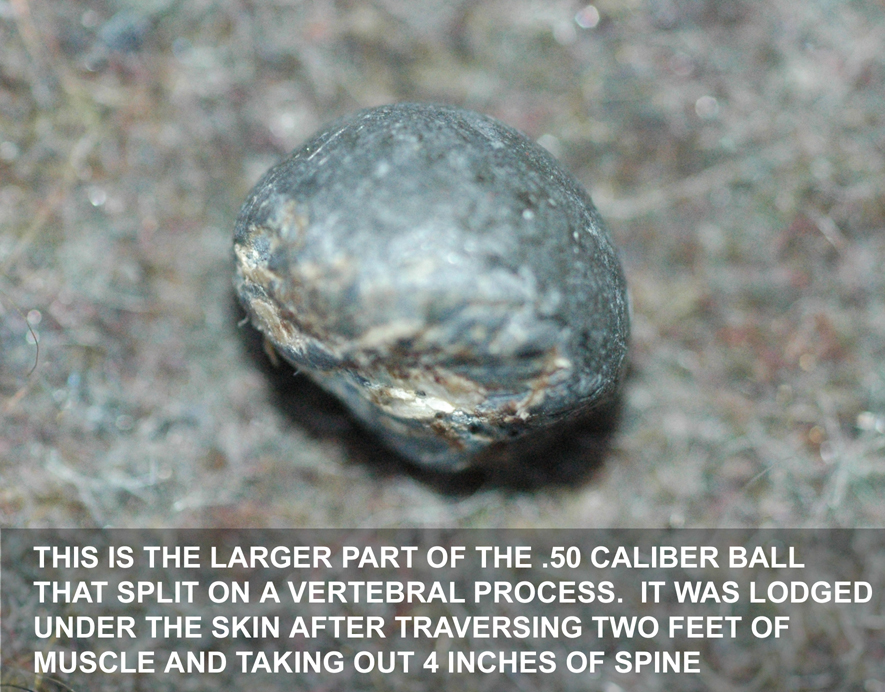 The first ball, upon entering the neck, traveled along the top of the spine, snapping off several of the vertical processes of the vertebrae. It split on one of those processes just the way a bullet will split if it hit an axe blade on the edge. His back was broken longitudinally between the shoulders and just behind. This wasn’t an overly powerful load: a 185-grain projectile with 90 grains of FFg behind it. But it went through two feet of solid muscle, broke several bones and was within a few millimeters of breaking through the other side.
The first ball, upon entering the neck, traveled along the top of the spine, snapping off several of the vertical processes of the vertebrae. It split on one of those processes just the way a bullet will split if it hit an axe blade on the edge. His back was broken longitudinally between the shoulders and just behind. This wasn’t an overly powerful load: a 185-grain projectile with 90 grains of FFg behind it. But it went through two feet of solid muscle, broke several bones and was within a few millimeters of breaking through the other side.
There was still the matter of the second part of the ball. I found that several weeks later when I was eating dinner….embedded in the center of one of the rib chops was the rest of the ball! I never noticed it until slicing into the chop. There was no bloodshot meat around it to give me a clue it was there.
The smaller fragment was clipped off the ball, traveling a few inches in the muscles of the back before coming to rest, hidden there until I sliced into the chop. The larger and heavier piece went further. The bigger piece I'd found when skinning him weighed 101.1 grains; the smaller piece was 68.3 grains. That's 169.4 grains, 91.5% of the pure lead ball’s starting weight. Had it not been split the intact bullet would undoubtedly have exited, after moving through two and a half feet of bone, muscle and connective tissue.
Deer #3:
Rick shot this one, making what has to be the most perfect shot on a deer that can be imagined: an instantaneous kill, a deer dead so fast she never knew it; and the carcass bled out completely while the blood is still liquid. Wish they could all be like that one!
He was 10 feet off the ground in a climbing treestand, and fired at a big doe underneath him, using 80 grains FFg in his .50. She dropped in her tracks, a big, fat, prime doe in perfect condition. Her dressed carcass weighed at 110 pounds, maybe 140-150 pounds live weight.
The ball hit her on the left side of the neck, angled very slightly down. It traversed the neck, completely severing her spine just in front of the shoulders; then went across the very front end of the chest cavity, clipping the aorta as neatly as a knife would have done, and exited.
Naturally she dropped like a bag of stones, dead before she hit the ground. The severed aorta left the heart untouched; and it must have continued to pump for a minute or two (this is very common in nervous system hits) because her entire blood volume was in the thoracic cavity. There was zero meat damage. Had he made that shot with his .270 he'd have taken her head off, and probably blown a hole 4" wide in the off side.
Deer #4:
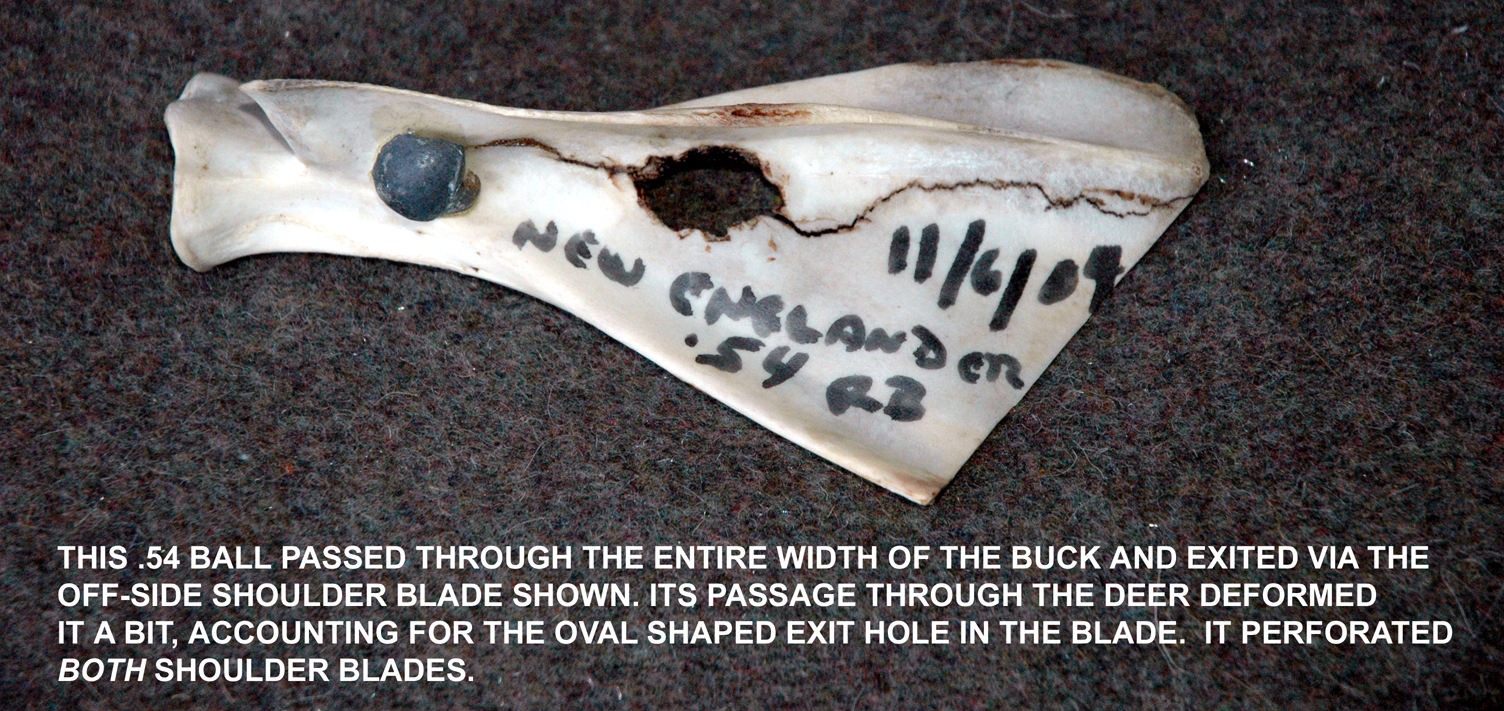
This was a biggish 4-point up in Amherst. I shot him in the shoulder at 40 yards with my .54. He fell to the ground immediately. The bullet went through one shoulder blade, leaving a perfectly round hole in it, passed through the chest cavity, then exited through the off-side shoulder blade, making a slightly oval hole in that one. Again, the buck dropped in his tracks and was dead before I got to him 30 seconds later. That was a pure lead ball, one of Remington’s “Golden” bullets, over 90 grains of GOEX FFg. It deformed slightly, accounting for the oval hole in the off-side shoulder blade.
Deer #5:
A very large doe shot from a ground stand 10 feet above her line of travel, using the .54 and 80 grains of GOEX FFg. The bullet hit her between the shoulder blades, snapped her spine, passed through her lungs and liver, and exited on her ventral side. She, too, was dead where she stood. Again, no meat damage.
Deer #6:
A small doe 25 yards off, shot in the neck as she faced me square on. The bullet hit below the chin, ground her neck bones to powder, and exited, never to be found.
Deer #7:
A medium sized spike buck, shot through the right shoulder at 25-30 yards with the .54. Dropped stone dead, bullet exited on the left side.
Deer #8:
A small buck shot with the .54 at 30 yards. Hit just behind the left shoulder, the ball going completely through him, breaking two ribs as it exited. He went about 75 feet, leaving a copious blood trail.
Deer #9:
Another of Rick’s kills, a 9-point buck shot with a .45 flintlock. The ball made a complete pass-through and a one-shot kill on a side-to-side chest shot on a deer that weighed 200 pounds on the hoof.
Deer #10:
A large doe, at 70 yards, using the .54. She was hit at the base of the neck near the body on the right side. The bullet exited on the left side. This was a one-shot kill, the deer bleeding out as she lay in the snow. The full story of this kill can be found elsewhere on this site under the title "A Doe In The Snow."
Who needs conicals?
| HUNTING | GUNS | DOGS |
| FISHING & BOATING | TRIP REPORTS | MISCELLANEOUS ESSAYS |
| CONTRIBUTIONS FROM OTHER WRITERS|
| RECIPES |POLITICS |
